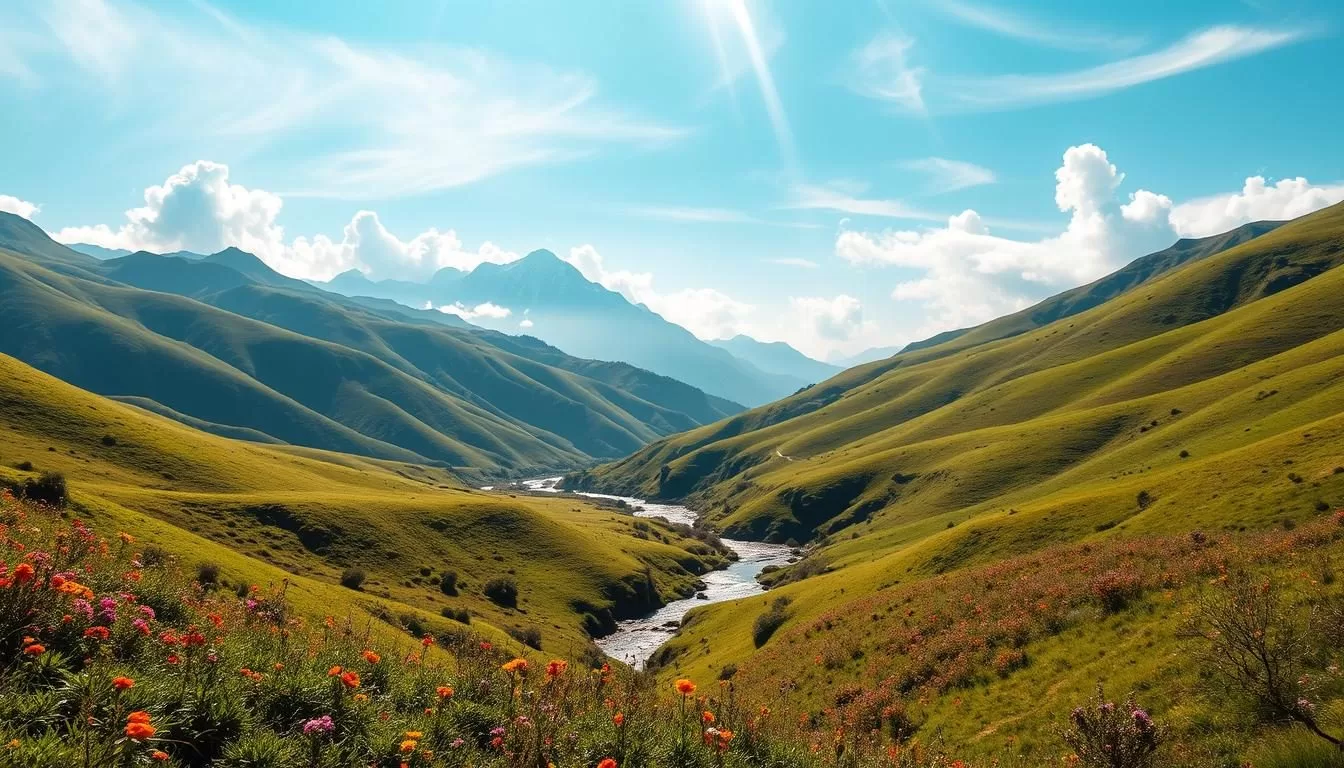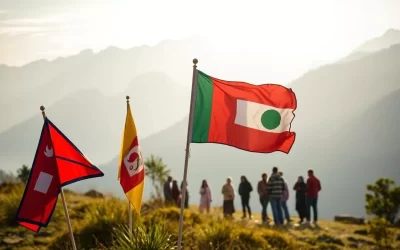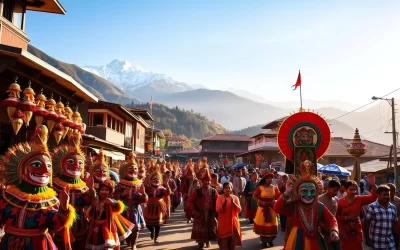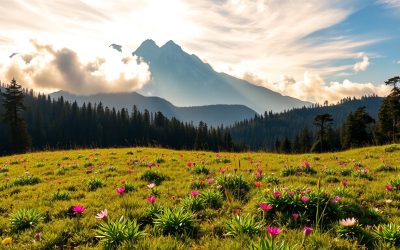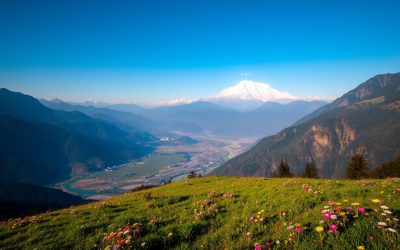✓ Accommodations ✓ Flights ✓ Rental Cars
Planning a trip to Sikkim can be a thrilling experience, but understanding its unique weather patterns is crucial to making the most of your visit.
The Himalayan state offers diverse landscapes and activities throughout the year, from rhododendron-filled springs to snow-covered winter landscapes.
To time your visit right, you need to know when the weather is dry and clear, making it ideal for trekking, photography, or cultural exploration. The best time to visit is typically from October to January or April to June.
By understanding Sikkim’s weather patterns, you can ensure a trip that’s both memorable and enjoyable.
Sikkim’s Seasonal Weather Patterns: A Year-Round Overview
Understanding Sikkim’s weather is crucial for planning a trip that aligns with your preferences and activities. The state’s unique Himalayan climate means that weather conditions vary significantly across different seasons, impacting the best time to visit.
Understanding Sikkim’s Unique Himalayan Climate
Sikkim’s geography, with its varying altitudes, results in a diverse climate across the state. The Himalayan climate is characterized by cold winters, mild springs, warm summers, and cool autumns. The state’s elevation plays a significant role in determining the temperatures and weather conditions throughout the year.
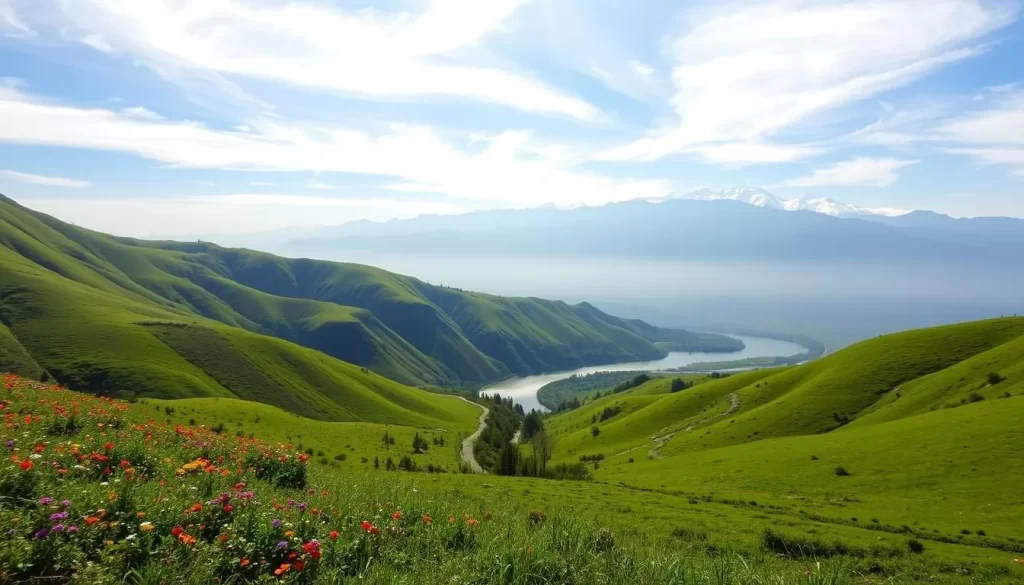
Monthly Temperature and Rainfall Breakdown
A closer look at Sikkim’s monthly temperature and rainfall data reveals the state’s seasonal weather patterns. The data shows that:
- Winter months (December-February) are cold, with temperatures ranging from 2-19°C and minimal rainfall (9-20mm), offering clear skies but cold conditions.
- Spring (March-May) brings warming temperatures (7-27°C) and moderate rainfall (37-161mm), with May seeing increased precipitation as the monsoon approaches.
- Summer and monsoon season (June-September) feature the warmest temperatures (21-30°C) but also the heaviest rainfall, particularly in July (319mm) and August (267mm).
- Autumn (October-November) offers pleasant temperatures (8-25°C) with dramatically decreasing rainfall after October, creating ideal conditions for outdoor activities.
This breakdown helps you plan your visit according to your weather preferences and desired activities in Sikkim, ensuring a memorable trip.
Spring in Sikkim: The Blooming Paradise (March-May)
As winter’s chill begins to fade, Sikkim transforms into a vibrant paradise in the spring. The season brings a fresh wave of excitement for travelers, with the snow melting and flowers blooming across the state.
Temperature Range and Weather Conditions
During spring, Sikkim’s temperature ranges from a comfortable 15°C to 20°C, making it an ideal time for outdoor activities. The weather is generally clear, with minimal rainfall, providing perfect conditions for a journey through the state’s picturesque landscapes.
Rhododendron Blooms and Valley of Flowers Experience
Spring is synonymous with the blooming of rhododendrons in Sikkim, painting the hills with vibrant colors. The Valley of Flowers is a must-visit during this season, offering breathtaking views of the blooming flora. It’s an ideal time visit Sikkim for nature lovers and photographers.
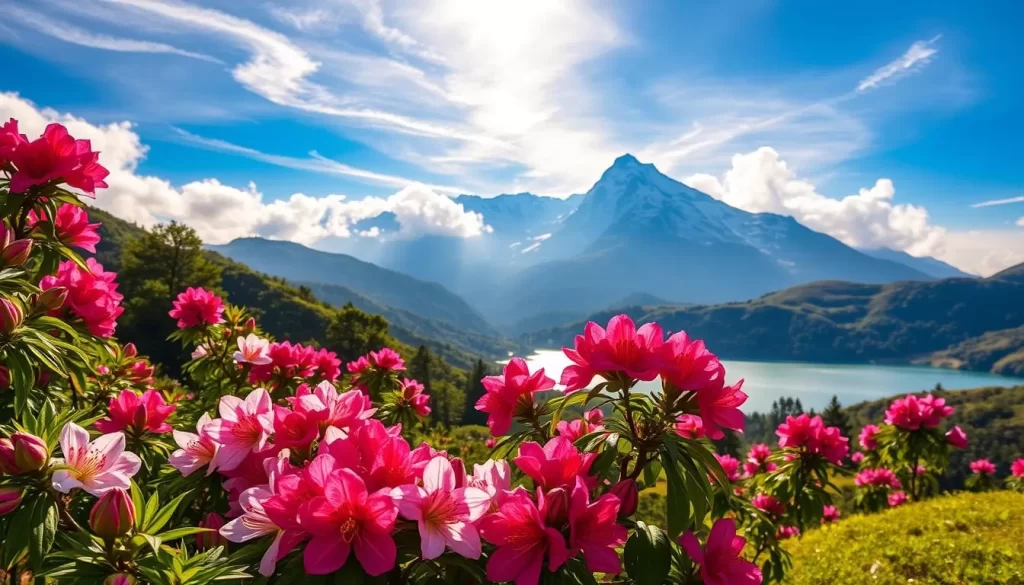
Spring Trekking Routes and Outdoor Activities
Spring opens up numerous trekking possibilities as the snow melts from mid-altitude trails. The famous Goecha La trek becomes accessible by late April, offering spectacular views of the mountain ranges. Other activities like bird watching, mountain biking, and river rafting are also popular during this season.
| Activity | Location | Best Time |
|---|---|---|
| Trekking | Goecha La, Dzongri | Late March to May |
| Bird Watching | Martam, Sikkim | March to May |
| Mountain Biking | Gangtok, Pelling | April to May |
| River Rafting | Teesta, Rangit rivers | Early Spring |
Whether you’re looking for adventure or a serene getaway, Sikkim in spring is a perfect travel destination. With its pleasant weather and vibrant landscapes, it promises an unforgettable experience.
Summer and Monsoon: The Green Season (June-September)
Summer and monsoon in Sikkim offer a serene and picturesque experience for travelers. You can experience the lush green landscapes and vibrant flora that make Sikkim a paradise for nature lovers.
Pre-Monsoon Summer (Early June)
Early June marks the beginning of summer in Sikkim, with temperatures gradually rising. It’s a good time to visit Sikkim before the monsoon sets in, as the weather is still pleasant, making it ideal for outdoor activities.
Monsoon Season Challenges and Precautions
The monsoon season, which follows the pre-monsoon summer, brings heavy rainfall to Sikkim. While this transforms the region into a lush green paradise, it also poses challenges such as landslides that may hinder transportation. You should be cautious and plan your trip accordingly, checking the weather forecast and road conditions before heading out.
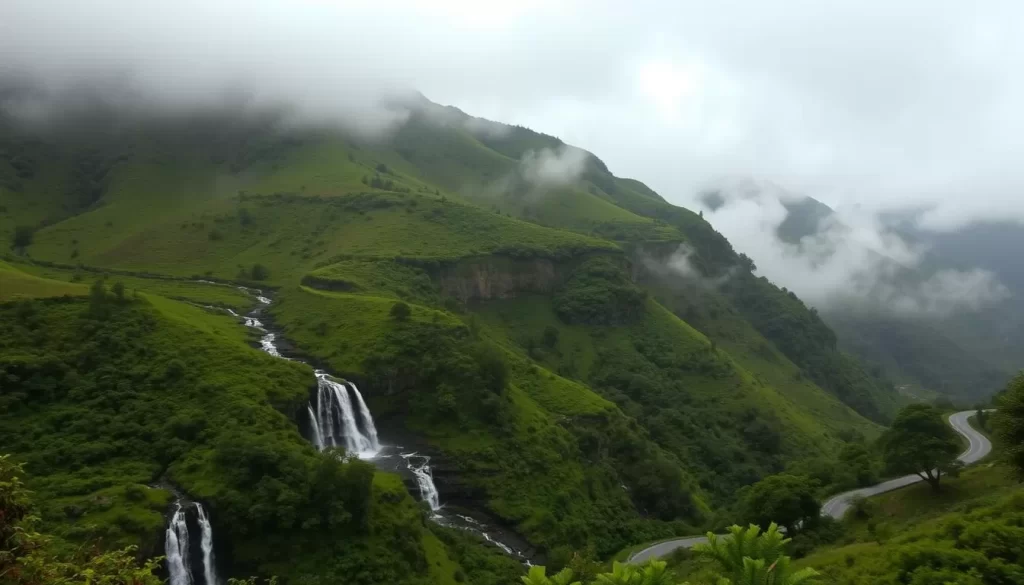
Hidden Advantages of Visiting During Rainy Season
Despite the challenges, visiting Sikkim during the monsoon season has its advantages. The landscapes are at their most beautiful, with mist-shrouded mountains and greenery everywhere, making it a great time for photography. You can enjoy a peaceful retreat with fewer tourists, and the waterfalls are at their peak, adding to the beauty of the surroundings.
The monsoon transforms Sikkim into an incredibly lush landscape, appealing to photographers and nature enthusiasts alike. With significantly reduced tourist numbers, you can enjoy better rates on accommodations and a more authentic experience of Sikkimese life.
Autumn: Sikkim, India’s Best Months for a Weather-Savvy Trip (October-November)
Sikkim’s autumn season is characterized by crystal-clear views and vibrant landscapes, perfect for adventure enthusiasts. As the monsoon rains subside, the state transforms into a haven for travelers seeking comfortable weather and breathtaking vistas. October and November are considered the best time to visit Sikkim, offering ideal conditions for a memorable trip.
Clear Skies and Mountain Views
The autumn season brings clear skies and spectacular mountain views, making it a photographer’s delight. The post-monsoon landscapes feature lush greenery and crystal-clear vistas, creating perfect conditions for landscape photography. The golden light of autumn adds a magical touch, with low-angle sunlight illuminating the mountains with warm hues during sunrise and sunset.
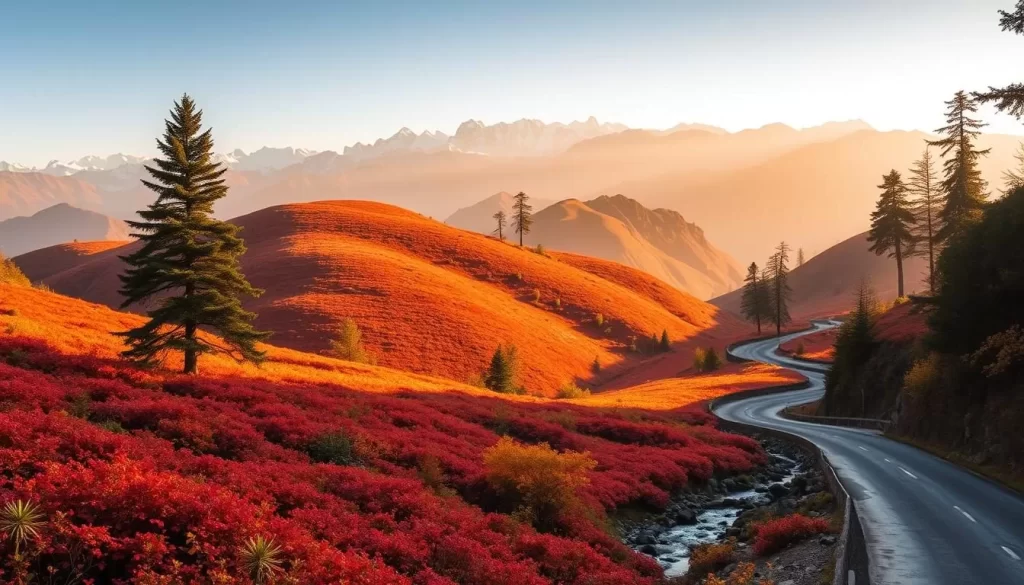
Cultural Festivals and Celebrations
Autumn in Sikkim is not just about natural beauty; it’s also a time for cultural festivals and celebrations. You can experience the local culture by participating in or attending these events, which showcase the rich heritage of the region. This is a great opportunity to immerse yourself in the local traditions and festivities, making your trip even more enriching.
Prime Trekking and Photography Opportunities
Autumn is widely regarded as the best time for trekking in Sikkim, with stable weather, clear views, and comfortable temperatures on the trails. The famous Goecha La trek, which approaches the base of Kanchenjunga, offers its most reliable conditions and spectacular views during October and November. Additionally, the Singalila Ridge trek along the India-Nepal border provides panoramic views of four of the world’s five highest mountains. These conditions make autumn an ideal period for outdoor activities like trekking and photography.
In conclusion, Sikkim during autumn offers a unique blend of natural beauty, cultural richness, and adventure opportunities, making it an ideal destination for travelers. Whether you’re looking for clear mountain views, cultural experiences, or trekking adventures, Sikkim in autumn has something to offer for everyone.
Winter Wonderland: Snow-Covered Sikkim (December-February)
Experience the enchanting beauty of Sikkim in winter, with its snow-clad peaks and tranquil ambiance. Winter in Sikkim is a magical time, offering a serene landscape that’s perfect for those seeking a peaceful getaway.
Temperature Ranges and Snowfall Patterns
During winter, Sikkim’s temperatures can drop as low as -5°C, creating a frosty atmosphere. The snowfall varies across different regions, with higher altitudes receiving more snow. This makes places like Yumthang Valley ideal for snow enthusiasts.
| Region | Average Temperature (°C) | Snowfall |
|---|---|---|
| Gangtok | -2 to 5 | Moderate |
| Yumthang Valley | -5 to 0 | Heavy |
| Nathula Pass | -10 to -5 | Very Heavy |
Accessible vs. Restricted Areas in Winter
While some areas like Gangtok and Pelling remain accessible, higher altitude regions may be restricted due to heavy snowfall. It’s essential to check local advisories before planning your trip to visit Sikkim in winter.
Winter Activities and Experiences
Winter in Sikkim offers a range of activities, from skiing and snowboarding in Yumthang Valley to soaking in the warm snow-surrounded hot springs. You can also enjoy stargazing on clear winter nights, making for a memorable experience in this winter wonderland.
As you plan your trip, consider the unique experiences Sikkim offers during the winter months. From the serene landscapes to the adventurous activities, Sikkim is a perfect destination for a winter escape.
Practical Travel Tips for Your Sikkim Adventure
To make the most of your Sikkim adventure, consider these practical travel tips. Sikkim, known for its diverse climate and breathtaking landscapes, requires careful planning to ensure a memorable trip.
Essential Packing Guide by Season
Packing for Sikkim depends on the season you visit. For spring and autumn, include layers for varying temperatures and comfortable trekking shoes. In monsoon, waterproof gear is essential, while winter requires warm clothing and insulated boots.
Transportation Considerations Throughout the Year
Transportation in Sikkim can be challenging due to its hilly terrain. During peak seasons, book your transportation in advance. Be prepared for potential landslides during monsoon and check road conditions before heading out.
Accommodation Recommendations for Different Seasons
Choosing the right accommodation is crucial. For a luxurious stay, consider Amritara Luxury Villa Tosca or Amritara Hidden Land Gangtok. During peak seasons, book at least 2-3 months in advance. In contrast, monsoon offers reduced rates, but some remote areas may have limited options.
| Season | Accommodation Tips | Transportation Tips |
|---|---|---|
| Spring/Autumn | Book luxury hotels like Amritara in advance | Book transportation early |
| Monsoon | Look for reduced rates, check availability | Be prepared for landslides |
| Winter | Choose accommodations with heating | Check road conditions before traveling |
Conclusion
With its diverse climate and breathtaking landscapes, Sikkim offers a unique experience, regardless of when you visit. The best time to visit Sikkim largely depends on your preferences for activities, comfort level, and what you hope to experience in this Himalayan paradise.
For those prioritizing clear mountain views and comfortable trekking conditions, autumn stands out as the optimal season. Spring, on the other hand, offers a spectacular alternative with rhododendron blooms and moderate temperatures. While summer monsoon presents challenges, it reveals a lush, green Sikkim. Winter transforms higher elevations into a snow-covered wonderland, perfect for those seeking tranquility and unique photography opportunities.
Regardless of when you choose to visit, Sikkim’s breathtaking mountain scenery, rich cultural heritage, and warm hospitality ensure a memorable journey. By planning your trip around Sikkim’s seasonal patterns and your personal interests, you can experience the best this mountain state has to offer while minimizing weather-related challenges. This makes Sikkim a paradise for nature lovers and adventure seekers alike.
In conclusion, Sikkim is a destination that offers something unique at any time of the year, making it a wonderland worth visiting.
The above is subject to change.
Check back often to TRAVEL.COM for the latest travel tips and deals.
